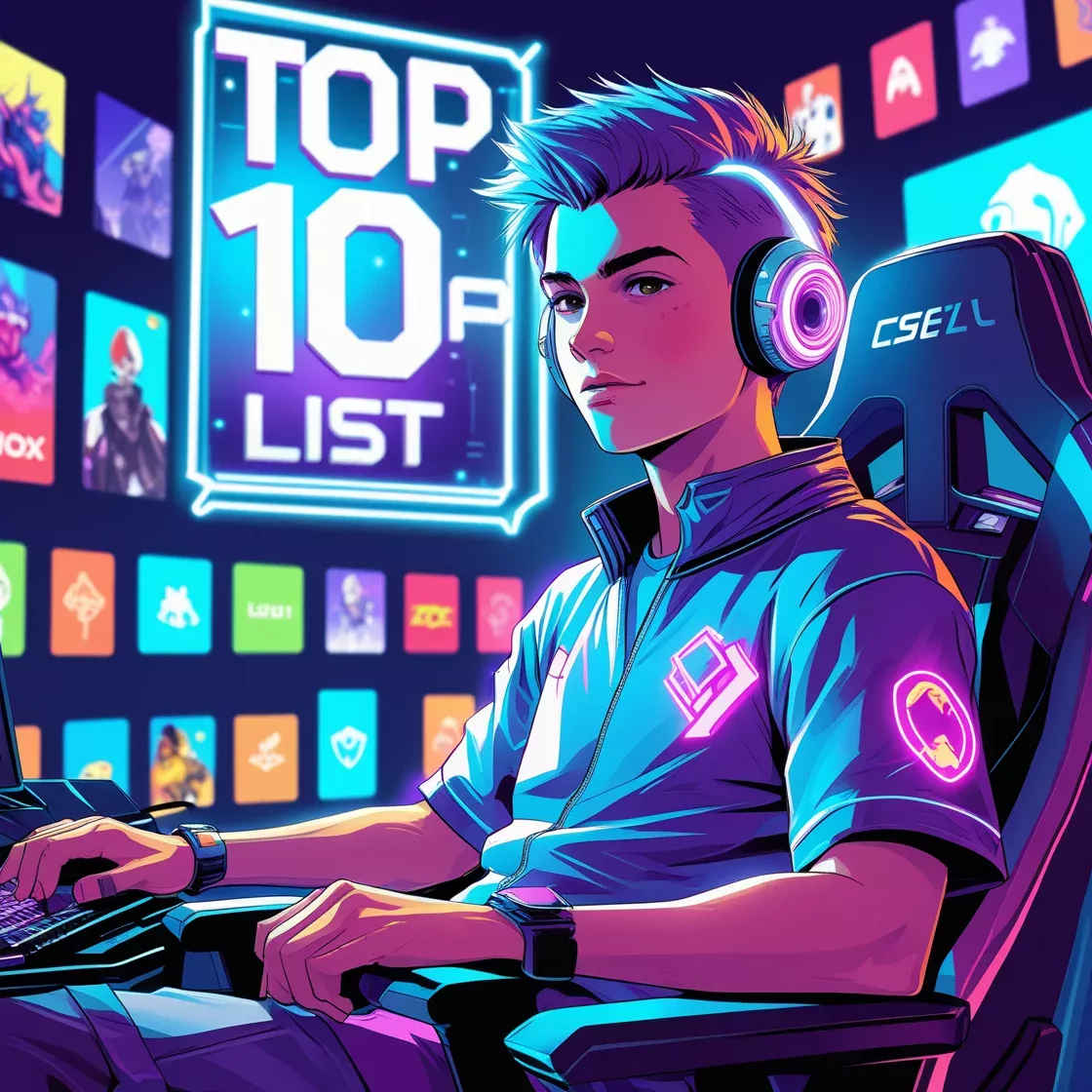Top 10 PC Games Where Players Fork Out the Most Cash: A Chill Guide
Intro
Ever curious about which PC games get players to shell out the big bucks? In today’s gaming scene, hits like League of Legends, Fortnite, and World of Warcraft do more than just deliver fun—they're money-making machines, raking in billions through microtransactions, subscriptions, and in-game buys. This laid-back guide from temploop dives into the top 10 PC games where players spend the most cash, breaking down why these games are so profitable, how they make their dough, and tips for players to keep their spending in check. With of solid info, stats, and examples, this post is your go-to for figuring out the revenue champs of PC gaming. Whether you’re a player, developer, or just into the industry, let’s dig into what makes these cash cows tick!
Getting to Know PC Game Money-Making
PC games have shifted from being a one-time buy to platforms that urge players to keep investing. But what’s behind this change and how do developers keep the cash rolling in?
What Are Microtransactions and Subscriptions?
Microtransactions are small in-game buys—think cool skins, loot boxes, or items that boost your resources. For example, in Counter-Strike: Global Offensive (CS:GO), you might find a rare knife skin costing $500 on the Steam Marketplace. Subscriptions require players to make repeat payments for access, like the monthly $14.99 for World of Warcraft. These setups help maintain a steady income, which supports game updates and expansions.
Example : Imagine a Fortnite player eyeing a sweet limited-edition skin for $15. The excitement of owning something exclusive drives them to buy it, only to see another tempting deal the next week. This back-and-forth adds up to billions in revenue.
Why Do Players Spend on PC Games?
Why do gamers happily spend hundreds on virtual goodies? Psychological triggers play a huge part. The fear of missing out (FOMO) encourages players to grab limited-time skins in Valorant. Also, owning rare items in CS:GO raises a player’s social status, making them feel special. Plus, it’s all about convenience—spending $10 on cards in Hearthstone can save hours of grinding. According to Udonis, a whopping 93% of Gen Z gamers have bought stuff in-game, a trend that's spreading to PC titles.
Example : Picture a League of Legends player dropping $50 on a legendary skin for their favorite champion. It's more than just a buy; it’s a way to express their identity in a competitive scene.
Key Insight : Knowing these tactics helps players make smarter spending decisions and appreciate the business side of their favorite games.
The Top 10 PC Games by Player Spending
Curious about which PC games lead the way in player spending? Here’s a list based on revenue, along with why they’re so successful.
👉Top 10 PS5 Games Where Players Spend the Most Cash: Your Go-To Guide
Ranking the Highest Earners
These games top the list in player spending, fueled by microtransactions, subscriptions, or unique money-making ideas:
- Dungeon Fighter Online - $22 billion (microtransactions, services)
- League of Legends - Over $10 billion (skins, champions)
- Fortnite - $9 billion (battle pass, cosmetics)
- World of Warcraft – Billions (subscriptions, in-game stuff)
- Counter-Strike: Global Offensive (CS:GO) - Billions (skin market)
- Crossfire - Billions (microtransactions, Asia-focused)
- Genshin Impact (PC) - $2 billion+ (gacha system)
- Valorant - Billions (cosmetics, battle pass)
- Hearthstone - Billions (card packs, expansions)
- Star Citizen - $700 million+ (crowdfunding, ship buys)
Source : VG Sales Wiki, VentureBeat
A Closer Look at Each Game
Let’s check out how each game makes its money and why players keep spending.
1. Dungeon Fighter Online
This MMO beat-em-up, loved in Asia, has pulled in $22 billion through microtransactions and in-game services. Players drop cash on character upgrades and cool looks, driven by competitive spirit and social status.
Example : A player might shell out $100 for avatar gear to stand out in PvP battles, showing off their commitment.
2. League of Legends
Riot Games’ MOBA rakes in over $1.5 billion yearly through skins, emotes, and champions. Special events and prestige skins create FOMO, pushing players to buy more.
Example : A fan spends $50 on a skin for their main hero, feeling it boosts their in-game presence.
3. Fortnite
Epic Games’ battle royale brings in $9 billion from its battle pass and cosmetic shop. Seasonal updates and collabs with celebs keep players coming back for more.
Example : A teen spends $20 on a Marvel-themed skin, excited to show it off during matches.
4. World of Warcraft
Blizzard’s MMORPG mixes a $14.99 monthly subscription with in-game buys, like mounts. Its huge world justifies the investment for dedicated players.
Example : A guild leader grabs a $25 mount to lead their raids in style.
5. Counter-Strike: Global Offensive (CS:GO)
Valve’s FPS has a skin market where rare items go for serious cash. Players trade and purchase skins to show off status and make investments.
Example : A collector spends $500 on a rare knife skin, banking on its value increasing.
6. Crossfire
This FPS is super popular in Asia and brings in billions through microtransactions for weapons and cosmetics. Its competitive vibe encourages spending.
Example : A player buys a $30 weapon skin to look good while playing.
7. Genshin Impact (PC)
miHoYo’s action RPG uses a gacha system, where players spend to unlock rare characters. The PC version rakes in over $2 billion.
Example : A fan goes on a $100 spending spree chasing after a 5-star character, drawn in by stunning visuals.
8. Valorant
Riot’s FPS earns billions thanks to cosmetics and battle passes. Limited-edition skins catch the eye of competitive players.
Example : A player buys a $20 skin pack to match their team's style.
9. Hearthstone
Blizzard’s card game pulls in cash from card packs and expansions. Players pony up to create competitive decks.
Example : A tournament player spends $50 on packs to keep their deck up to par.
10. Star Citizen
Cloud Imperium’s space sim has raised over $700 million through crowdfunding and ship purchases, with some ships costing over $1,000.
Example : A backer pays $500 for a ship, believing in the game’s lofty ambitions.
Key Insight : Each game’s success comes from a money-making strategy that clicks with its audience and gameplay.
Free-to-Play PC Games and How They Make Cash
Free-to-play (F2P) PC games play a huge role in player spending. But how do they thrive without a price tag?
How Free-to-Play Models Work
F2P games let everyone in for free, making money through optional buys like skins, battle passes, or boosts. This model pulls in huge crowds, boosting the number of potential spenders.
Top Free-to-Play Games
- Fortnite : Its battle pass and V-Bucks system bring in billions.
- League of Legends : Free champions rotate but skins keep the cash flowing.
- Valorant : Cosmetic bundles and battle passes drive revenue.
Example : A Fortnite player spends $10 on V-Bucks for a dance emote, adding some flair to the fun.
Key Insight : F2P games reach a wide audience but need to balance monetization to keep players happy.
Subscription-Based PC Games
Subscriptions keep the cash flowing for PC games, especially MMORPGs.
The Subscription Model Explained
Players pay a repeat fee—usually monthly—for access to a game or premium stuff. This helps support ongoing work and updates.
Top Subscription Games
- World of Warcraft : $14.99/month, plus in-game buys.
- Final Fantasy XIV : Combines subscriptions with expansions and an item shop.
- EVE Online : Charges for access to its complex space MMO.
Example : A Final Fantasy XIV player pays $12.99 monthly for exploring Eorzea and $10 for a new outfit.
Key Insight : Subscriptions help keep players engaged, but they must offer real value to keep people around.
Money-Making Strategies That Drive Revenue
What tricks do these games use to boost spending, and how does that affect players?
Tactics Used by Top PC Games
- FOMO : Limited-time skins in Valorant create a sense of urgency.
- Social Status : Rare items in CS:GO show off prestige.
- Convenience : Hearthstone’s card packs save players a lot of grind time.
- Gacha Systems : Genshin Impact’s randomness pulls players in to spend.
Effects on Players and Developers
Player spending fuels innovation, like live events in Fortnite, but overly aggressive tactics can stir up backlash—as seen with Star Wars Battlefront II’s loot boxes.
Example : A Genshin Impact player throws down $50 on wishes, thrilled by a new character but annoyed by the price tag.
Key Insight : Developers need to find the right balance between making money and keeping players happy for lasting success.
Tips for Managing In-Game Spending
How can players enjoy these games without going broke? Here are some handy strategies.
Strategies for Players
- Set a Budget : Stick to $20 a month and keep track of what you buy.
- Evaluate Value : Ask yourself if a $15 skin is really worth it in the long run.
- Avoid Impulse Buys : Give yourself a 24-hour cooling-off period before hitting that buy button.
- Use Parental Controls : Set limits for younger players on spending.
- Learn Game Design : Spot FOMO and paywalls to help resist temptations.
Example : A parent gives their kid a $10 monthly limit for Valorant buys, teaching them some smart budgeting skills.
Key Insight : Being aware and disciplined makes gaming fun and keeps it budget-friendly.
FAQs
- Can I play these games without spending? Absolutely! Most are free-to-play, but not spending might mean slower progress.
- Which PC game has the highest player spending? Dungeon Fighter Online wins with $22 billion.
- Are microtransactions fair? They’re optional, but some games raise pay-to-win concerns.
- How do I avoid overspending? Budget wisely, wait before buying, and get to know game strategies.
Wrap-Up
The top 10 PC games where players spend the most money highlight the strength of modern monetization, from Dungeon Fighter Online’s microtransactions to World of Warcraft’s subscriptions. These gaming hits mix engaging gameplay with smart revenue methods, but players need to wise up about their spending. At temploop, we're here to help you navigate the world of gaming finances. Check out more insights on our blog and level up your gaming experience today!










